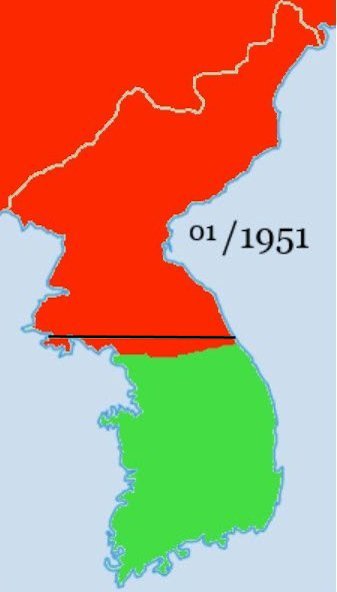
|
Korean War Time Line June 1950 to July 1953 9. Position of Forces in January 1951
With Lieutenant-General Matthew Ridgway assuming the command of the U.S. Eighth
Army on 26 December, the PVA and the KPA launched their Third Phase Offensive
(also known as the "Chinese New Year's Offensive") on New Year's Eve of 1950.
Utilizing night attacks in which U.N. Command fighting positions were encircled
and then assaulted by numerically superior troops who had the element of
surprise, the attacks were accompanied by loud trumpets and gongs, which
fulfilled the double purpose of facilitating tactical communication and
mentally disorienting the enemy. UN forces initially had no familiarity with
this tactic, and as a result some soldiers panicked, abandoning their weapons
and retreating to the south. The Chinese New Year's Offensive overwhelmed UN
forces, allowing the PVA and KPA to conquer Seoul for the second time on 4
January 1951.
Back to Korean War Time Line June 1950 to July 1953 - Page 2 |